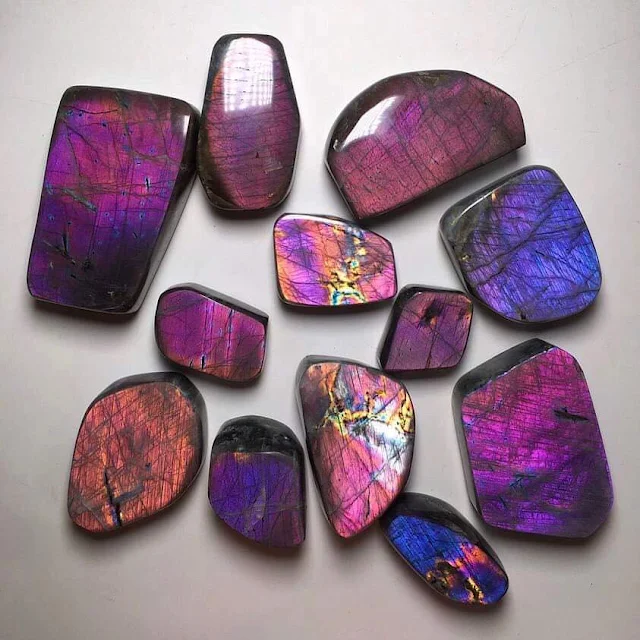
Appearance
Labradorite is often transparent, white, or gray in reflected light. It is well known, though, for its labradorescence, a vibrant display of colors that can include orange, red, green, blue, and yellow. The size, arrangement, and makeup of the microscopic lamellae within the material determine the color of the labradorescence. The most complicated crystal system, the triclinic crystal system, is where labradorite crystallizes.
Geographical Distribution
A few countries with significant labradorite deposits are the United States, Canada, Madagascar, Norway, and Finland.
Metaphysical Properties
Some people think labradorite has metaphysical qualities, such as strengthening intuition, offering protection, and encouraging self-discovery. People often utilize it in energy healing and meditation techniques, believing the stone to have spiritual significance.

Chemical Composition
Labradorite has the chemical formula (Na,Ca)₁₋₂Si₃₋₂ O₈, which places it in the plagioclase feldspar group. Aluminum, calcium, and sodium silicates make up the majority of it. The composition of the labradorite within the plagioclase series is determined by the variation in the sodium to calcium ratio.
Types
Spectrolite:
The most valuable type of labradorite is called spectrolite, or Finnish labradorite, and is distinguished by its remarkable iridescence and vibrant colors. It displays an amazing display of colors that are similar to the Northern Lights, including blue, green, yellow, orange, and red.
Oregon Sunstone:
The aventure scence of Oregon sunstone, which is mainly found in Oregon, USA, is a shimmering effect brought on by copper platelet inclusions. It usually has red, orange, and golden tones that resemble the sun’s warmth.
Rainbow Moonstone:
Adularescence labradorite, another name for rainbow moonstone, has a smooth, rainbow-like iridescence that gives it a milky look. It frequently has a translucent or semi-transparent quality that lets light gradually seep into the stone.
Grey Labradorite:
The most popular type, gray labradorite, has shades of gray ranging from light gray to dark gray. It might show hues of blue, green, or yellow labradorescence.
Uses
- Jewelry: Jewelry made of labradorite is a popular choice. Because of its distinct iridescence, it is particularly appealing as cabochon material, which is frequently utilized in pendants, earrings, necklaces, and rings. As a versatile stone that can infuse creations with a hint of mystique, labradorite is highly valued by jewelers.
- Carvings and Sculptures: Labradorite is a highly sought-after material for ornamental carvings and sculptures because of its unique color play. The optical properties of the stone are frequently used by artists to produce visually arresting works that have a touch of originality.
- Decorative Objects: Beads, vases, and figurines are just a few of the ornamental items made from labradorite. Its iridescence can improve the visual appeal of artistic displays and interior decoration.
- Art and Craft Projects: Because labradorite has such distinctive visual effects, it can be used in a variety of art and craft applications. It gives a sophisticated and iridescent touch to mosaics, collages, and mixed-media artwork.
Table





